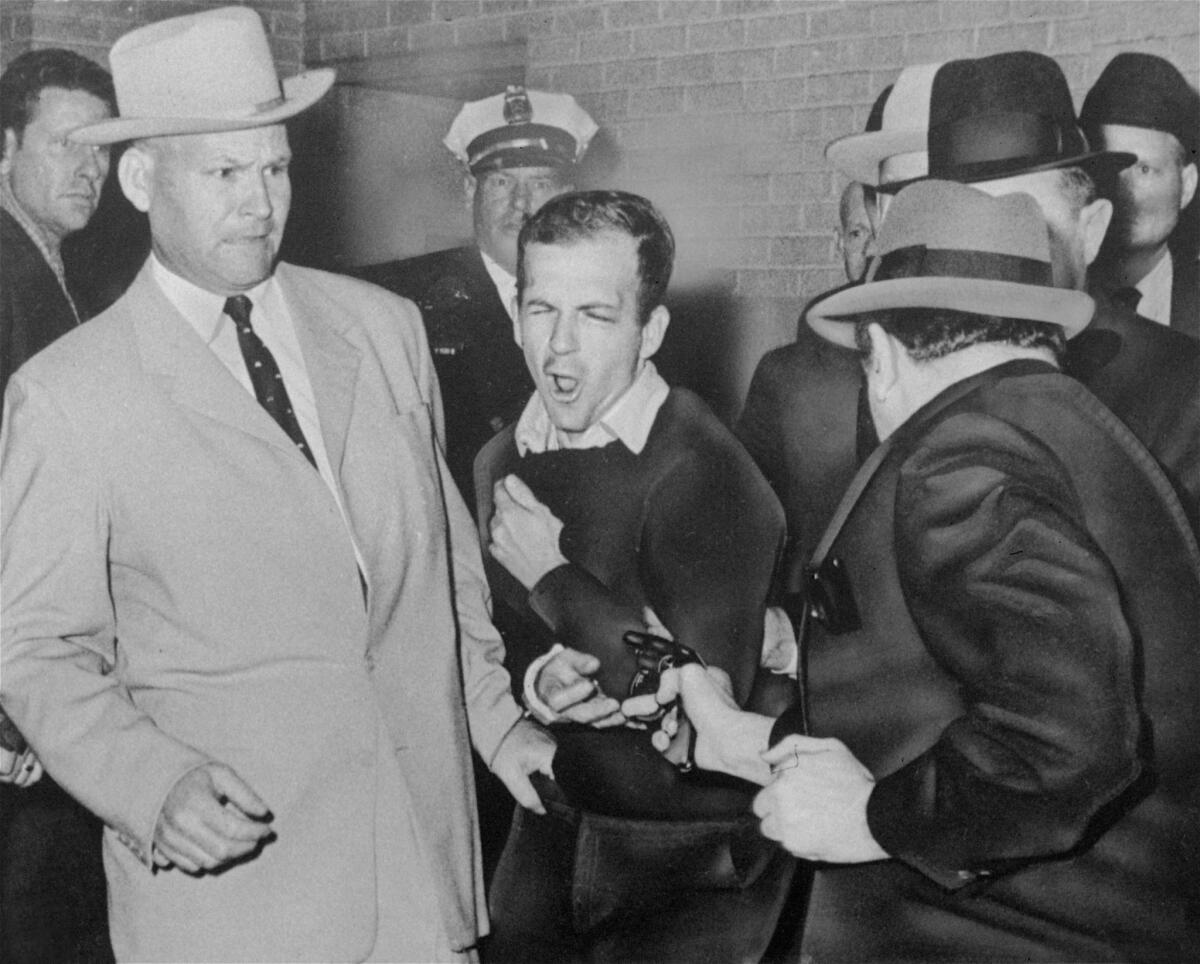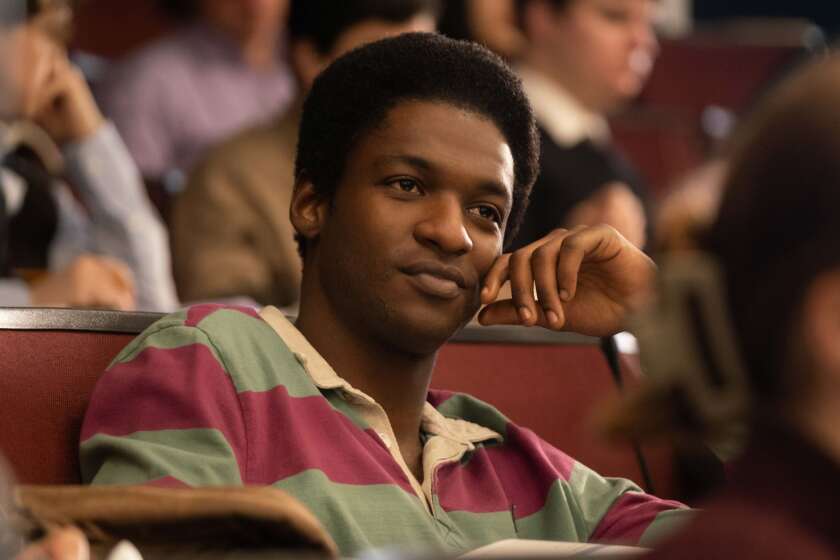Analysis: Trump’s ‘Access Hollywood’ unmasking and the searing power of video to shape the historic moment

Donald Trump dismisses the ‘Access Hollywood’ video as ’locker room talk.’ More coverage: http://www.latimes.com/trailguide
Everyone thought they knew Donald Trump. We’ve heard the stories, the blustery asides. A brash ornament in our celebrity-driven culture, he’s devoured the spotlight for decades. But it was a hot mike and video clip on a bus that exposed him, as if for the first time, in the unfiltered glare of public opinion.
Scoured of spin before a nation in disbelief, his degrading comments about women portrayed him as a sexual predator, made more unseemly by the schoolboyish laughter from sidekick Billy Bush. The video distilled Trump’s essence with the force of gravity. It was fitting, some would say ironic, that the impresario who mastered reality TV and the power of image was laid bare by the tools of his craft.
A video — years ago it would have been a picture — reaches into our DNA. It is truth unadorned. It burrows in the brain, tugs at the conscience. Its allure has grown only stronger in our telegenic time of iPhones, Instagram and YouTube clips of police shootings. The Trump video is now filed in the collective conscious, like the moon landing and President Clinton’s denial that he had sex with “that woman,” Monica Lewinsky. They are images that need no commentary; they come fully loaded.
“We’ve got all the clips of Trump talking about Rosie O’Donnell and saying other derogatory things, a lot of them in taped news events,” said Robert Thompson, director of the Bleier Center for Television and Popular Culture at Syracuse University. “But why was this video more powerful than the others? It came out of the blue as a voyeuristic and serendipitous moment.”
He added: “The real power here is the text and the voices ... and the showbiz side of this big bus emerging.”
Allegations about Trump’s sexual harassment of women have been around for years, but the video has acted as a catalyst. Since the 2005 “Access Hollywood” clip was released, the New York Times published accounts of two women who said they were inappropriately touched by Trump. Other women have emerged with similar stories. Reality show guru Mark Burnett, producer of Trump’s “The Apprentice,” is facing pressure to release unaired video from the show. In a statement, he said he “does not have the ability nor the right to release footage or other material.”
Pictures, and later video, have given unmatched potency to real events. The shock and grimace on President Reagan’s face after he was shot in an assassination attempt by John Hinckley Jr. Jack Ruby jumping from a crowd of police and reporters to shoot Lee Harvey Oswald after President Kennedy’s assassination. Even more intimate transgressions have been captured on video with startling drama: Baltimore Ravens running-back Ray Rice punching his fiancée in an elevator after which she crumples to the floor.

Two of the most dramatic images to emerge over the last year forced the world, at least for a moment, to gasp: The refugee toddler in red shirt and shorts who washed up on a Turkish beach, and the Syrian boy with the dusty hair and bloody face, his feet dangling from a chair, looking straight into the camera during his country’s civil war.
Such riveting pictures cut through the white noise and filters of life. They connect and repel. They strip away masks and make us face the best and worst of ourselves. They also lead to a deeper understanding of things we thought we fully grasped. In a world of clamor and hype, they illuminate with subtlety, texture and nuance, as if granular portraits caught in real time. For good or ill, those images as well as our selfies and Facebook videos define us.
We can’t turn away from our screen creations.
The Trump video brought scathing riffs and parodies from Samantha Bee, John Oliver and others. On the Trump side of the spectrum, Pamela Geller wrote on Breitbart News Network: “Donald Trump was caught on video making some naughty remarks, and the political and media elites are in an uproar — an orgy of hypocrisy. ”
Outrage over the video, however, also carried ominous political overtones for a Republican Party that desperately needs the female vote.
“To be blunt, he insulted white women instead of Mexicans, immigrants and Muslims,” said June Cross, a documentary filmmaker and professor at the Columbia Journalism School. “White women are still a segment the Republican Party holds dear. He crossed the line.” She added that similar to President Nixon’s Watergate tapes, “It’s the words that are iconic here.”
The video — amplified by social media — may not resonate through history as a landmark image moment in the way that the fall of the Berlin Wall or the photo of the naked Vietnamese girl burned by napalm did. But it has captured a man and his era, starting with two voices inside the purr of a bus traveling slowly across a studio lot.
“She used to be great,” someone says. “She’s still very beautiful.”
“I moved on her, actually,” says Trump, adding later, “I did try and … her, she was married.”
The sensation of watching the video is as if being inside a movie or a ridealong through an episode of “The Sopranos.” Even to imagine it in that context speaks to the increasingly blurring lines between our facts and our fictions.
Geller seized on this aspect to point out what she called selective outrage and blamed liberals for media and entertainment worlds that celebrate permissiveness and wanton behavior. “The liberals corrupted the culture,” she wrote. “All of a sudden the liberals are prudish?”
To be blunt, he insulted white women instead of Mexicans, immigrants and Muslims. White women are still a segment the Republican Party holds dear.
— June Cross, documentary filmmaker and Columbia Journalism professor
Trump is not seen immediately on the video, which adds an air of suspense. But his voice on the mike, so distinctive it betrays, conjures more visuals as the scene plays out. Trump says he wants a Tic Tac in case he kisses actress Arianne Zucker, who is waiting outside the bus. The sound of candy rattles.
“When you’re a star,” says Trump, “they let you do it. You can do anything.”
“Whatever you want,” says Bush.
“Grab ’em by the … ,” says Trump. “You can do anything.”
Perhaps just as telling as what’s said on the video is how Trump’s manner shifts from when he’s talking behind the bus door to when the door opens and he steps out to greet Zucker. His voice lifts an octave and its inflections are softer, as if, in his parlance, he has moved from the locker room into the light of more discerning eyes.
“Are you ready to be a soap star?” Zucker asks.
That moment years ago crystallized what was make believe and what was not. Trump has long straddled both sides, gliding from mogul to candidate, popping up on our screens as both an outrageous spectacle and the embodiment of our times.
See the most-read stories this hour »
Twitter: @JeffreyLAT
ALSO
Has Donald Trump broken the media?
Why we can’t stop watching Trump vs. Clinton cliffhanger TV
McNamara: Why TV news needs to pull itself together for the Trump-Clinton debates
More to Read
Only good movies
Get the Indie Focus newsletter, Mark Olsen's weekly guide to the world of cinema.
You may occasionally receive promotional content from the Los Angeles Times.










